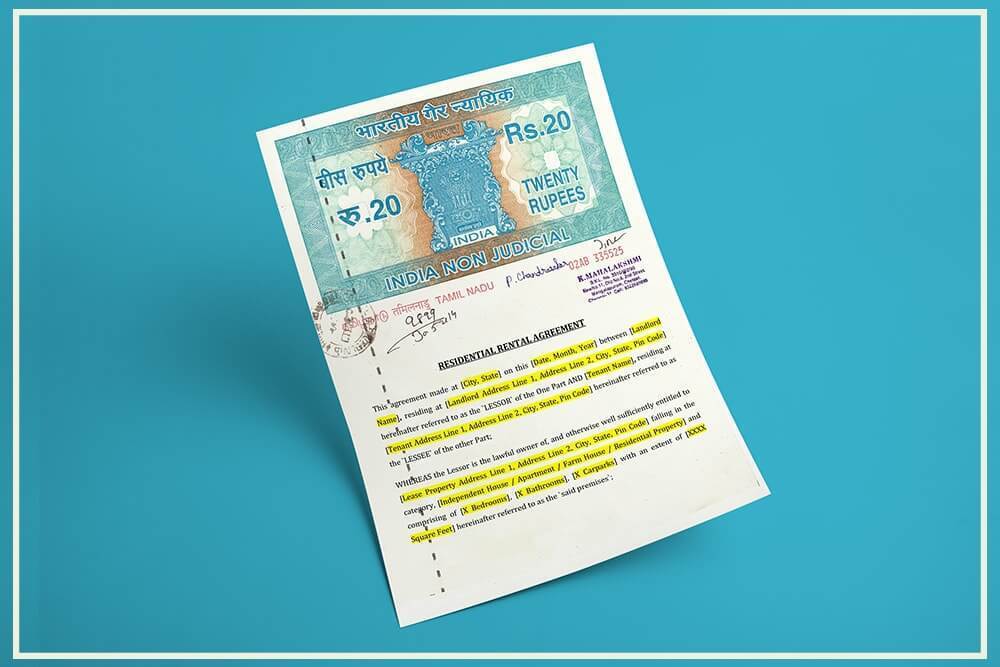
Leave and License Agreement Format: Complete Guide for Tenants and Landlords in India
Understanding the essentials of a leave and license agreement format in India, including Word and Hindi templates, legal requirements, registration rules, and practical tips for landlords and tenants.
Table of Contents
- Introduction: Why Leave and License Agreement Matters
- What Is a Leave and License Agreement?
- Legal Basis of Leave and License Agreements in India
- Leave and License Agreement Format Word
- Leave and License Agreement Format in Hindi
- Leave and License Agreement Word Format PDF
- Leave and License Agreement Word Format
- Important Clauses in Leave and License Agreement Format
- Registration Process of Leave and License Agreement
- Stamp Duty and Registration Charges
- Rights and Duties of Landlord and Tenant
- Sample Leave and License Agreement Draft
- Important Court Judgments on Leave and License Agreements
- Conclusion: Importance of Proper Leave and License Agreement Format
Introduction: Why Leave and License Agreement Matters
When it comes to renting property in India, one of the most commonly used legal documents is the leave and license agreement format. Whether you are a landlord allowing someone to use your property or a tenant seeking a safe rental, this document protects the rights of both parties. It is widely used in cities like Mumbai, Pune, Bangalore, Delhi, and across India, where tenancy laws are strict and regulated.
Unlike a tenancy or lease, a leave and license agreement gives only a temporary right to occupy property, without creating ownership or tenancy rights. This makes it a preferred option for landlords, as it avoids long-term legal complications. For tenants, it offers legal security and ensures they are not evicted unfairly.
With growing disputes in rental housing, using the correct leave and license agreement format has become essential. It ensures transparency, avoids oral disputes, and stands valid in courts of law. In this guide, we’ll cover different formats including Word, PDF, and Hindi versions, along with legal clauses, stamp duty, and real-life examples.
In fact, most landlords in metro cities no longer rely on verbal agreements, as courts often reject oral tenancy claims. Having a properly drafted leave and license agreement format ensures that the terms are legally enforceable and mutually agreed upon.
What Is a Leave and License Agreement?
A leave and license agreement is a legal contract where the owner of a property (licensor) permits another person (licensee) to use the property for a specific purpose and duration. Unlike a tenancy or lease, this agreement does not create any legal interest in the property. The licensee gets only the right to use the premises, not ownership rights.
The agreement is governed under the Indian Easements Act, 1882, specifically Section 52, which defines a license. Courts have repeatedly clarified that such agreements do not create tenancy rights and can be terminated as per agreed terms.
- Licensor: The property owner who grants permission
- Licensee: The tenant or occupier using the property
- Duration: Usually 11 months, renewable with mutual consent
- Registration: Mandatory if duration exceeds 11 months
This format is popular in Maharashtra and several other states, where landlords prefer not to create tenancy rights but still provide legal protection to tenants. For example, in Mumbai, almost every rented property is documented under a leave and license agreement format to ensure legal clarity.
By using this format, landlords avoid the complexity of tenant protection laws which can make eviction a long legal battle. At the same time, tenants gain confidence because their occupation is recognized by law and cannot be unfairly disturbed before the agreed period ends.
Legal Basis of Leave and License Agreements in India
The legal foundation of leave and license agreements lies in Section 52 of the Indian Easements Act, 1882. It defines a license as a right granted by one person to another, allowing lawful use of property without creating an interest in it.
Further, the Maharashtra Rent Control Act, 1999 makes it mandatory to register leave and license agreements in the state, setting a precedent for many others. Courts across India distinguish leave and license agreements from leases under the Transfer of Property Act, 1882.
“A leave and license agreement does not confer any tenancy rights; it only grants permission to use the premises under certain conditions.” – Supreme Court of India
This distinction is crucial because tenancy rights are harder to terminate, while a leave and license agreement provides flexibility for landlords. Many property disputes reach courts simply because people confuse tenancy with license. A tenancy gives rise to statutory protection under rent laws, but a license only provides a contractual right that can be revoked.
Thus, landlords prefer a leave and license agreement format to retain control over their property, while tenants still enjoy clarity of terms and legal enforceability.
Leave and License Agreement Format Word
Many landlords and tenants prefer using a Leave and License Agreement Format Word file because it is easy to edit and customize. Word format agreements allow parties to insert names, addresses, rent details, security deposit, and other clauses as per their requirements. After finalization, the Word file can be printed, signed, and registered with the Sub-Registrar of Assurances.
Advantages of using Word format include:
- Easy to modify clauses as per property type
- Simple to share between parties before finalization
- Compatible for conversion into PDF for registration
Many online portals and legal websites, including government-approved services, offer pre-drafted Word templates for leave and license agreements. However, one should always consult a property lawyer before finalizing, as improper clauses may lead to disputes.
For example, if the Word draft does not include a clause about utility bill payments, disputes may arise later. Similarly, omission of security deposit refund terms can cause financial disagreements. Therefore, while Word format agreements are convenient, legal vetting ensures they are enforceable.
Several state governments also provide downloadable Word templates on official websites. These are usually simple, but landlords can add clauses specific to their needs, such as parking usage, maintenance responsibilities, or restrictions on sub-letting.
Leave and License Agreement Format in Hindi
Many people in India prefer agreements in their local language for better understanding. A Leave and License Agreement Format in Hindi is particularly useful in states such as Uttar Pradesh, Madhya Pradesh, Bihar, Rajasthan, and Delhi, where Hindi is the primary language of communication.
Legally, the agreement can be drafted in English, Hindi, or any regional language as long as both parties understand it and it is duly registered. A Hindi format ensures that rural landlords and tenants do not face language barriers. For instance, elderly landlords may not be comfortable with English agreements, so a Hindi draft avoids confusion.
Key features of drafting in Hindi include:
- Use of clear and simple Hindi words to explain rights and duties
- Inclusion of all standard clauses like rent, deposit, notice period, and termination
- Registration with the Sub-Registrar’s office is valid regardless of the language
For example, instead of writing “Security Deposit”, the Hindi draft may use the word “सुरक्षा राशि”. Similarly, “Premises” may be written as “परिसर”. This makes it easier for parties to understand what they are agreeing to.
In Maharashtra, where Marathi is also commonly used, leave and license agreements are sometimes bilingual (English + Marathi). Similarly, in North India, landlords often request bilingual agreements (Hindi + English). This avoids misinterpretation and ensures both versions carry equal legal weight.
Lawyers suggest that even if the agreement is drafted in Hindi, technical terms such as “Stamp Duty” and “Registration” should remain in English for accuracy. Courts recognize agreements in Hindi, provided they are legally registered and signed by all parties.
Leave and License Agreement Word Format PDF
Another popular format is the Leave and License Agreement Word Format PDF. After drafting the agreement in Word, landlords and tenants often convert it into PDF format for two main reasons:
- PDF ensures the agreement cannot be altered once finalized
- Sub-Registrar offices often prefer PDF uploads for online registration
Many states, such as Maharashtra, Karnataka, and Delhi, have online registration portals where users can upload PDF agreements directly. A digitally signed PDF version also works as valid proof of agreement in courts.
Advantages of using PDF format:
- Prevents tampering of terms
- Easy to share over email or WhatsApp
- Accepted by almost all registration authorities
- Can be digitally signed with Aadhaar eSign facility
For instance, in Maharashtra, landlords and tenants can register their leave and license agreements online by uploading the PDF document, verifying identity through Aadhaar, and making online payment of stamp duty and registration fees. The final registered copy is provided in PDF format and is legally valid.
Hence, landlords often prepare the draft in Word for editing but use PDF for registration and storage. This combination ensures flexibility during drafting and security after execution.
Leave and License Agreement Word Format
Using a leave and license agreement word format is extremely common in India. The Word document format provides flexibility and is widely accepted by advocates, property consultants, and registration authorities.
Why Word format is preferred:
- Editable at any stage before printing
- Compatible across devices (laptops, desktops, mobiles)
- Easy to create customized clauses depending on the property type
- Word format can be converted into PDF instantly for submission
For example, if a landlord is giving a flat for rent in Mumbai, the Word format allows him to add extra clauses like “No pets allowed” or “Premises not to be used for commercial purposes”. Similarly, a tenant can request inclusion of a clause on refund of security deposit within 15 days after vacating the property.
Several government-approved websites also offer downloadable Word formats of leave and license agreements, but these are usually basic templates. A property lawyer can further tailor them to ensure they meet the specific needs of both parties and comply with local regulations.
It is always advisable to include witnesses’ details in the Word format itself. Once the agreement is finalized, it should be printed on stamp paper of the appropriate value and signed by the landlord, tenant, and witnesses before being submitted for registration.
Important Clauses in Leave and License Agreement Format
While using a leave and license agreement format, it is essential to ensure that key clauses are included. Missing or vague clauses often lead to disputes between landlords and tenants. The following clauses are considered vital:
- Duration: Clearly mention the period of license (usually 11 months)
- Rent: Specify monthly rent, due date, and mode of payment
- Security Deposit: Amount paid, refund conditions, and deductions
- Maintenance Charges: Who will pay society charges, electricity, and water bills
- Termination Clause: Notice period (usually 1-3 months) required for vacating
- Use of Premises: Whether property can be used for residential or commercial purposes
- Sub-letting: Whether tenant can sub-let property or not
- Lock-in Period: A minimum period before which neither party can terminate
- Default Clause: Consequences if rent is not paid on time
For example, if the agreement does not specify who pays maintenance charges, disputes may arise. Some landlords include clauses where society charges are paid by the tenant, but major repairs remain the responsibility of the landlord. Such clarity helps avoid future conflict.
Courts also look at these clauses while deciding disputes. In Durgadas v. Union of India, the Supreme Court held that the intention of the parties is derived from the clauses in the agreement, not from verbal claims.
Thus, every leave and license agreement format must have clear, enforceable clauses drafted with precision.
Registration Process of Leave and License Agreement
Registration of a leave and license agreement is mandatory if the term exceeds 11 months. In Maharashtra, even 11-month agreements must be registered under the Maharashtra Rent Control Act, 1999. Other states also encourage registration to avoid disputes.
Steps in registration process:
- Draft agreement in Word format and finalize terms
- Print agreement on stamp paper of appropriate value
- Visit Sub-Registrar’s office or register online (if available)
- Submit identity proofs of landlord, tenant, and witnesses
- Pay stamp duty and registration charges online or at office
- Biometric verification of landlord and tenant (Aadhaar authentication)
- Receive digitally signed registered copy in PDF format
In states like Maharashtra, online registration facility allows parties to register agreements without visiting the registrar’s office. They can upload the agreement, complete Aadhaar-based verification, and pay stamp duty online.
Failure to register may lead to agreements being considered invalid in court. For example, if a tenant refuses to vacate and the agreement is unregistered, the landlord may face difficulty in proving terms in court. Therefore, registration is highly recommended even for shorter agreements.
Stamp Duty and Registration Charges
One of the most important legal aspects of a leave and license agreement format is the payment of stamp duty and registration charges. Without proper stamp duty, the agreement may not be admissible as evidence in court. Stamp duty varies from state to state in India and is calculated based on the monthly rent, security deposit, and duration of the agreement.
For example:
- Maharashtra: Stamp duty is 0.25% of the total rent payable during the agreement period + deposit amount.
- Karnataka: Typically 1% of the annual rent or market value of the property, whichever is lower.
- Delhi: Around 2% of the average annual rent.
- Gujarat: Between 1% to 2% of the agreement value depending on city/town category.
In addition to stamp duty, registration fees are usually charged separately. These fees vary from ₹1,000 to ₹5,000 depending on the state. Some states offer online payment facilities, making the process hassle-free.
Non-payment of stamp duty can have severe consequences. The agreement may be deemed void in case of disputes, and the party at fault can also face penalties. Therefore, landlords and tenants must calculate stamp duty carefully and pay it at the time of registration.
Rights and Duties of Landlord and Tenant
The leave and license agreement format is designed to balance the rights and duties of both the landlord (licensor) and the tenant (licensee). Understanding these responsibilities helps avoid disputes.
Rights of the Landlord:
- Right to receive rent on time
- Right to evict tenant after notice period as per agreement
- Right to recover damages if tenant causes harm to property
- Right to retain control over property ownership
Duties of the Landlord:
- Provide peaceful possession of the property
- Return security deposit after lawful deductions
- Ensure major repairs and structural maintenance
- Respect privacy of tenant and not disturb use of property
Rights of the Tenant:
- Right to occupy property for agreed duration
- Right to get deposit refunded
- Right to receive written notice before termination
- Right to enforce terms of agreement in court
Duties of the Tenant:
- Pay rent on time
- Use property only for agreed purpose (residential/commercial)
- Not to sub-let without landlord’s consent
- Maintain property in good condition and pay utilities
Disputes usually arise when either party fails to honor these duties. For instance, if a tenant refuses to vacate after the agreement ends, the landlord can file an eviction suit. Similarly, if the landlord refuses to refund the deposit without valid reason, the tenant can approach the civil court.
Sample Leave and License Agreement Draft
Below is a simplified version of a leave and license agreement format. This is only a sample draft for reference. Landlords and tenants should consult a lawyer for a customized agreement.
THIS LEAVE AND LICENSE AGREEMENT is made at [City] on this [Date] between:
Licensor: Mr./Mrs. [Name], residing at [Address] (hereinafter referred to as the “Licensor”).
Licensee: Mr./Mrs. [Name], residing at [Address] (hereinafter referred to as the “Licensee”).
WHEREAS the Licensor is the owner of premises situated at [Address]. The Licensor hereby grants the Licensee permission to use and occupy the premises on the following terms:
- Monthly rent of ₹[Amount] payable on or before the 5th day of each month
- Security deposit of ₹[Amount], refundable on termination
- License period of 11 months commencing from [Date] to [Date]
- Licensee shall not sub-let, transfer, or part with possession
- Either party may terminate with one month’s written notice
IN WITNESS WHEREOF both parties have signed this Agreement on the date above in the presence of witnesses.
This sample is illustrative only. Each agreement should include specific clauses depending on the property and state requirements.
Important Court Judgments on Leave and License Agreements
Indian courts have passed several landmark judgments clarifying the difference between lease and license agreements. These cases ensure that landlords and tenants cannot misuse terms of agreements.
- Associated Hotels of India Ltd. v. R.N. Kapoor (1959): The Supreme Court held that the substance of the agreement, not its label, determines whether it is a lease or a license.
- Delta International v. Shyam Sundar Ganeriwalla (1999): SC clarified that a license does not transfer any interest in property, it merely grants permission.
- Pradeep Oil Corporation v. Municipal Corporation (2002): Reinforced that license agreements cannot be treated as tenancy agreements.
- Maharashtra Rent Control Act Cases: Courts have repeatedly emphasized that unregistered agreements exceeding 11 months cannot be enforced in court.
These judgments highlight that simply calling an agreement “leave and license” is not enough. The actual terms must reflect the intention of the parties. If the agreement grants exclusive possession for a long period, courts may treat it as a lease despite the title.
Conclusion: Importance of Proper Leave and License Agreement Format
A leave and license agreement format is more than just paperwork—it is a safeguard for both landlords and tenants. With rising property disputes, a well-drafted and properly registered agreement ensures transparency, legal protection, and peace of mind.
Whether you use leave and license agreement format word, leave and license agreement format in Hindi, or leave and license agreement Word format PDF, the key is to ensure that the document clearly states the rights and obligations of both parties.
Courts have made it clear that intention and clarity matter more than titles. Thus, drafting carefully and paying proper stamp duty is essential. By following legal guidelines, landlords retain ownership rights while tenants enjoy lawful use without fear of sudden eviction.
📥 Download ready-to-use templates:
👉 Leave and License Agreement Format in Hindi
👉 Leave and License Agreement Format Word
👉 Leave and License Agreement Word Format PDF
Final Note: If you are entering into a rental arrangement, consult a property lawyer. They will help you prepare a foolproof agreement, avoiding costly litigation later.
Support from AdvocateMart: Regional Legal Experts
Looking to draft or register a leave and license agreement? AdvocateMart has experienced property lawyers across India who can guide you with legal drafting, stamp duty payment, and registration process. Reach out in your city:
- Leave and License Agreement Lawyer in Surat
- Property Lawyers in Vadodara
- Agreement Drafting in Ahmedabad
- License Agreement Help in Pune
- Legal Support in Vapi
With AdvocateMart, you get reliable, affordable, and professional legal assistance for all your rental documentation needs.
Need Help? We’re Just a Click Away
If you’re a landlord or tenant unsure about your rental documentation, talk to AdvocateMart today. Our experts will draft, review, and register your leave and license agreement format with accuracy and care.
Talk to a Property Advocate NowSelect Your Legal Problem
🧑⚖️
Our Verified Legal Experts
Have questions about your case? Talk Directly to Our Lawyers! Our verified advocates are here to guide you with honest, expert legal advice.
🤝 ⚖️






